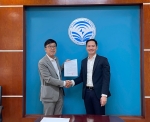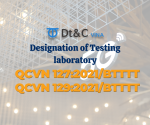[China] The Chinese Ministry of Industry & Information Technology (MIIT) drafted in 2020 new "Regulations on the Administration of Radio Transmission Equipment" which proposed changes to the 2016-version. After feedback from the industry was collected and incorporated, the new version was published as Order No. 57 in December last year, showing 1 July 2023 as the date of implementation.
In addition, on 13 January this year, MIIT published guidance (in Chinese) for the regulations.
Some of the key points/changes are:
- Reducing the time for SRRC type approval review and certificate release to 15 working days.
- Increasing the validity period of type approval (for certain categories) to more than 2 years and less than 5 years.
- Allowing the applicant to self-compile the type of approval code documentation (MIIT ID).
- For domestic manufacturers, providing a system (MIIT No. 314) for ‘self-inspection’ and ‘self-certification.’
- Micro-power short distance devices are no longer exempt from SRRC Type Approval and must now comply with
the technical requirements described in MIIT No. 52. - The user manual shall include the wording: "The use of micro-power short-distance radio transmission equipment.
shall comply with the relevant regulations of the State on Radio Management”.
Also, the devices must be labelled with a special logo. (The regulation for this is expected to be available in
good time before July 1, 2023).
[Malaysia] The Malaysian Communications & Multimedia Commission (MCMC) has issued a revised regulation (Technical Code) for so called “IMT-Advanced (Long Term Evolution) - User Equipment”. It is based on the International Mobile Telecommunications IMT Advanced Standard, issued by the International Telecom Union ITU. The new regulation was developed pursuant to section 185 of the Act 588 by the Malaysian Technical Standards and is denoted MCMC MTSFB TC T015:2022. It entered into force on 5 January and replaces the former MCMC MTSFB TC T015:2017.
Some of the major modifications in this revision are:
- Inclusion of new frequency 800 MHz (band 20) for Long Term Evolution - User Equipment (LTE UE) i.e., for utilization of the frequency bands between 839 MHz to 844 MHz (uplink) paired with 798 MHz to 803 MHz
- Inclusion of the international safety standard for ITC equipment; IEC 62368-1.
- Inclusion of 700 MHz (band 28) for the purpose of anchoring for 5G User Equipment (UE) operations in Non-Standalone (NSA) mode.
The user equipment that is intended for use in connection with the IMT Advanced (Long Term Evolution) for public mobile telecommunications service, includes amongst other cellular mobile terminals, handheld, portable and vehicle-mounted equipment, Radio Frequency (RF) interface cards and modems.
Source: Nemko




![[MIC] Officially issued QCVN 134:2024/BTTTT - National technical regulation on specific absorption levels for handheld and body-worn radio devices according to Circular 19/2024/TT-BTTTT of Ministry of Information and Communications](https://cdn0577.cdn4s.com/thumbs/qcvn-134_thumb_150.jpg)



![[Latest] Circular 02/2024/TT-BTTTT regulating the List of potentially unsafe products and goods under the management responsibility of the Ministry of Information and Communications](https://cdn0577.cdn4s.com/thumbs/trang-huy-hieu-the-loai-logo-2_thumb_150.jpg)


![[Dt&C VINA] Decision on accreditation of laboratories according to ISO/IEC 17025:2017](https://cdn0577.cdn4s.com/thumbs/vl1%20(1)_thumb_150.png)
_thumb_150.png)
![[Most] Officially issued QCVN 25: 2025/BKHCN - National technical regulation on electrical equipment for electricity installation in the family and similar installation system](https://cdn0577.cdn4s.com/thumbs/trang-huy-hieu-the-loai-logo-14_thumb_150.png)